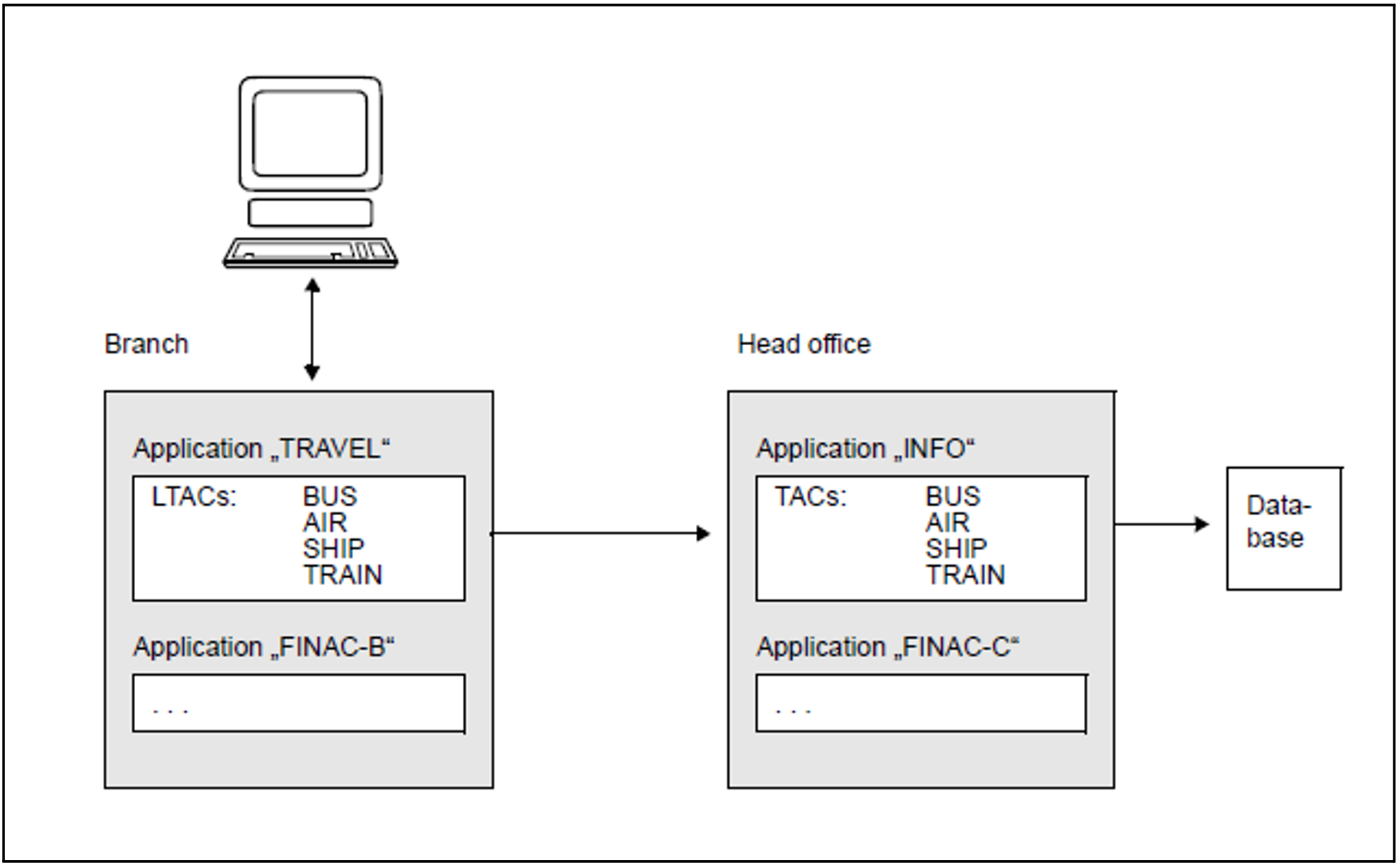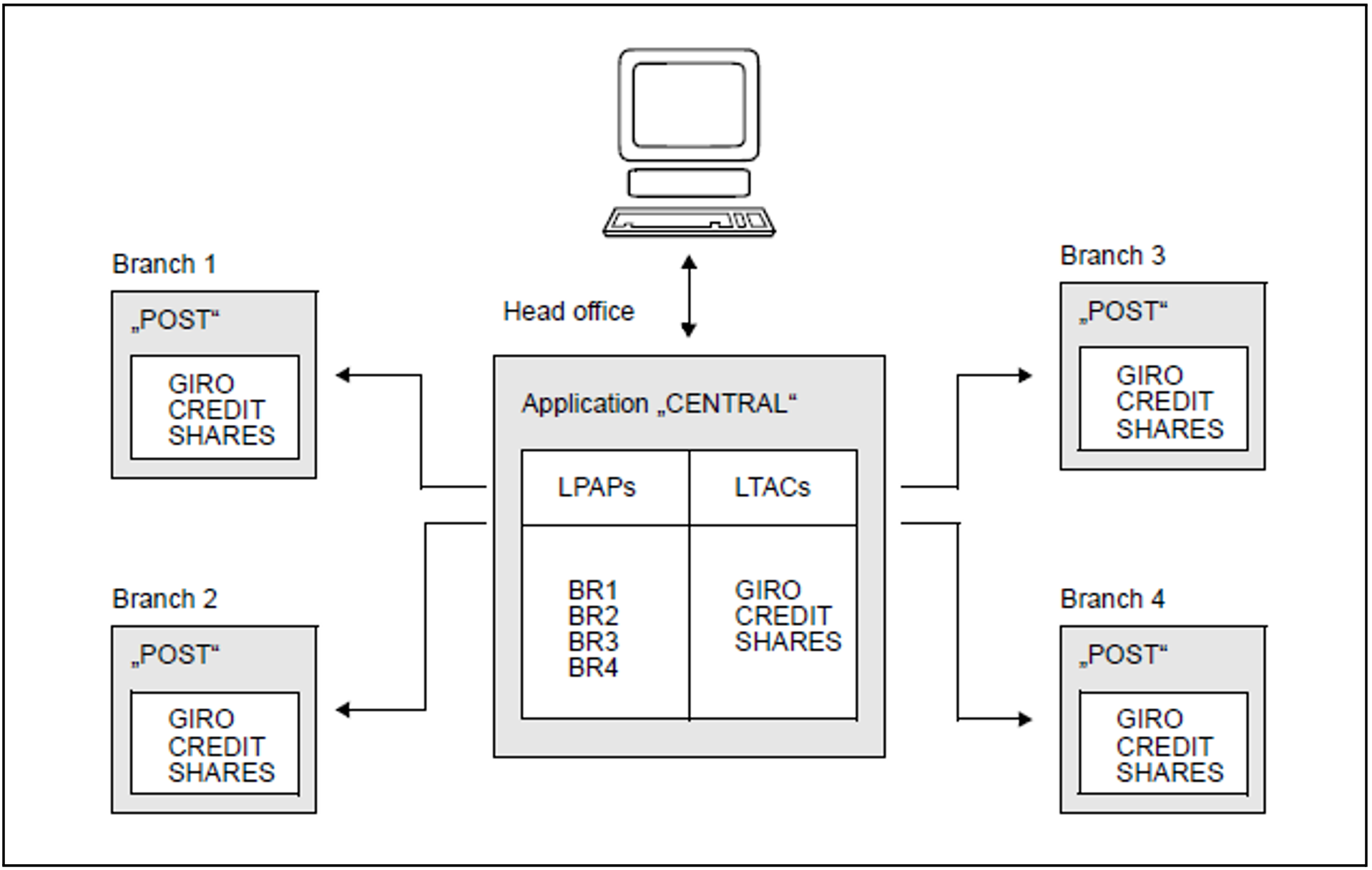Before a remote service can be requested, it must be addressed. This is achieved by means of an addressing call in the service routine of the job submitter. In the call, the jobsubmitting service specifies the logical name of the remote service and assigns an identifier to the remote service. This service identifier appears in the job-submitting service for all jobs sent to the remote service, and when reading the results.
The remote service and the remote application are always addressed by means of their logical names. The logical names for remote applications (LPAPs or OSI-LPAPs) and for remote services (LTACs) are defined during generation, and are linked to the actual names in the partner applications. The logical service name is similar in function to the service transaction code. It can be linked to a partner application in one of two ways:
By generation
This is known as single-step addressing, since the partner application need not be specified in the addressing call.In the addressing call in the program
This is known as double-step addressing. This type of addressing is practical in cases where the same service can be started in several applications.
The two procedures for addressing a remote service are illustrated in the following diagrams. The precise format of addressing calls can be found in the openUTM manuals “Programming Applications with KDCS for COBOL, C and C++” and “Creating Applications with X/Open Interfaces”. |
Figure 19: Single-step addressing
The branch offices of a travel agency use the UTM application “TRAVEL”, which retrieves the required information from the UTM application “INFO” in head office. The individual services with the logical names “BUS”, “AIR”, “SHIP” and “TRAIN” were linked to the “INFO” application during generation. It is therefore sufficient to specify the logical service name in the program. The logical name of the partner application need not be specified in the program.
Figure 20: Double-step addressing
Each of the four branches of a bank use the “POST” application. The “CENTRAL” application in head office can access various services, which are identical in all branches. The job-submitting service in head office must therefore select both the service and the partner application in the program.


